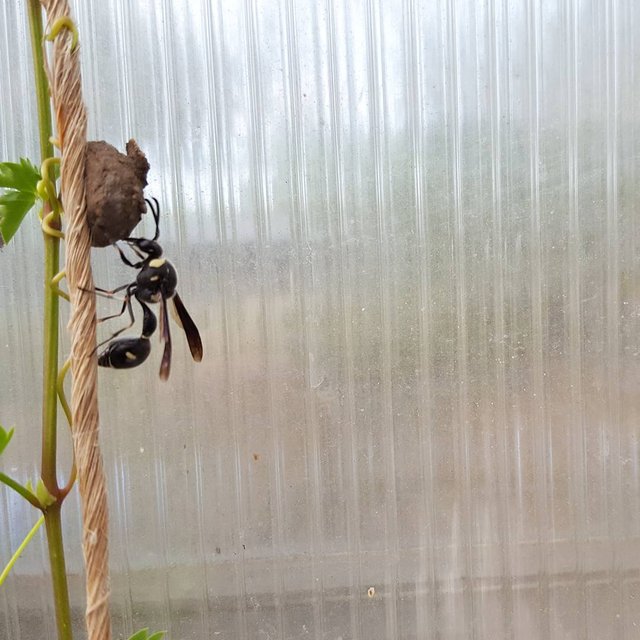Potter Wasp - A Beneficial Insect for the Gardens
Most people would not include any type of wasp high on their list of insects they like to see on their homesteads. There is so much fear attached to anything that can bite or sting.
Meet The Potter Wasp

This interesting critter is a solitary insect. Each wasp nest is built for a single egg. I couldn't find in my research how many nests a female Potter Wasp would attend. The nest is built of clay based mud and is round in shape and about the size of a marble. There is often a "spout" or "neck" on the mud nest making it look like a clay pot thrown on a potter's wheel... thus the name.
Potter Wasps are beneficial in the garden because they will paralyze and collect caterpillars and beetle larvae for the nest. Each nest will be supplied with these larvae as the single food source for the developing baby wasp. I read that each single wasp nest can hold up to 12 caterpillar. That's pretty good garden help if you ask me.
The adult Potter Wasp feeds on flower nectar. Even though they can technically sting they are not often aggressive since they do not defend their nests. The nests are built, sealed and left alone.
If you would like to support the efforts on the Daddykirbs Farm and to do your part to help Save The Bees! You can upvote this post and also consider joining me over on Patreon, (click here) where you can pledge $3 (or more) per month. All the proceeds goes into continuing to Educate, Entertain and Encourage people to connect with nature and to live healthier lives.
My 5 Most Recent Posts
*for your upvoting pleasure*



If you want a badge (Homesteading, Gardening, Beekeepers, Woodworkers, Dads, Moms, Food Preservers) please submit $1SBD to @daddykirbs with a memo stating what it is for :)






WHAT?! I had no idea these little guys existed! Thank you for all the wonderful education you provide! Resteemed!! :D
When I was growing up we called this wasp the mud-dobber because of the nexting material she chooses. Potters wasps never frightened me because I knew they rarely sting, and I am not the kind of person who would try to harm them. Thanks for the educational post.
interesting there are so many different types of these wasps and hornets and bees out there and all have some kind of purpose to perform other then sting people :) thanks for sharing Ps missed your live stream on yt even in the playback hope all is well at your home :D
Very interesting, not sure I have seen any around here in PA
where about's in the world are you?
I know we had a very similar wasp in Queensland in Australia and was always impressed watching them build their pots and stack them with spiders. Yes, usually they would just seal paralysed spiders in the pot, after laying her egg in the unfortunate arachnid's flesh.
That's how I remember them, but I haven't lived there for more than two decades. I may well be mistaken. Maybe they were caterpillars?
Good on you for raising awareness of these wonderful creatures.
big hugs
I'm in the San Antonio, TX area. I did read that the Potters wasp does also predate on spiders.
Hey thanks very much - we have potter wasps too in Costa Rica and they make clay tubes rather like panpipes! they lay an egg in each,
add a little food and seal it up - they call them singing wasps because of the noise they make during construction
Those "pipes" are so cool. Thanks for sharing :)
Such a beautiful insect.
Thanks for posting this pic, never got to see one this close before. (Thankfully).
_Rob
This one is right inside the door of my greenhouse. It kinda startled me when I first saw it.
I hate having wasps around, but I get why they're useful. Do these Potter Wasps sting?